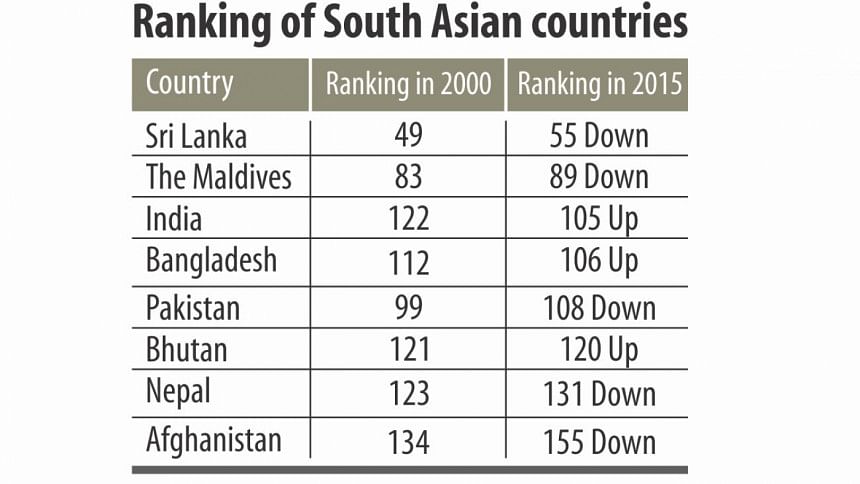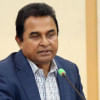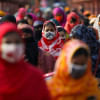Quality of economic growth improves

The quality of Bangladesh's economic growth has improved between 2000 and 2015, according to an index developed by the South Asian Network on Economic Modeling (Sanem).
The country ranked 106th among 156 nations in 2015 in the Index of Quality of Economic Growth (IQEG), up by six notches from 112 in 2000.
Bangladesh scored 42.7 on a scale of 0 to 100, according to the research organisation.
The score indicated that the nation has not that much been able to translate its increasing economic growth over the last two decades into improvements in people's livelihoods.
“Bangladesh is successful in achieving a high growth rate but still has a long way to go to transform the growth numbers into quality,” said Sanem Executive Director Selim Raihan.
“When it comes to the question of huge improvement in the livelihoods of the people, we are still lagging behind,” he said.
In context to South Asia however, Bangladesh's ranking remains unchanged. Sri Lanka is the best performer with a score of 56.46 followed by the Maldives, India, Bangladesh and Pakistan. Afghanistan is the region's worst performer and is ranked 155th.
Globally, Sweden has been the top performer scoring 93.01 while Guinea-Bissau the worst with 21.13.
Sanem took up the initiative to develop the index as the focus of discussions on economic growth has shifted from quantity to quality.
“This shift has happened with the growing understanding that a mere increase in economic growth rate is not sufficient to achieve much larger social development goals,” said Raihan. Sanem said it measured the IQEG for 156 countries for 16 years between 2000 and 2015.
This index is unique and for the first time it adopted three major components: economic base, economic strength and social development, said Raihan, a professor of the Department of Economics at the University of Dhaka.
The economic base has been assessed by the level of per capita GDP, economic strength by per capita income growth, volatility of per capita income growth, economic diversification and export capacity.
“A higher capacity of exports to finance imports shows a country's strength in international trade. The more diversified the export basket of a country is, the higher the country is capable of handling external shocks,” said the professor.
“A more diversified export basket also, in general, indicates a country's higher degree of economic diversification,” he added. On the other hand, the social development index measured progress in health and education.
Sanem said every South Asian country, except Afghanistan, improved their index values from 2000 to 2015. The South Asian average IQEG in 2000 was 37.32, which increased to 40.90 in 2015, said Sanem.
Meanwhile for Southeast Asian countries, the average increased from 50.12 to 54.83.
“To ensure that the economic growth process is able to bring qualitative improvements in the livelihoods of the people of the country, there is a need to increase the economic strength of the country through policies, which can generate sustained and stable economic growth and promote economic diversification,” said Raihan.
All the while it is equally important to make notable improvements in the health and education sectors, he said.
“Bangladesh witnesses one of the world's lowest public spending on health and education in context to a percentage of the GDP. With such low public spending, it is not possible to ensure the quality of economic growth,” said Raihan.
He said Bangladesh spends 2 percent of the GDP on education and 0.8 percent on health whereas spending on the sectors was 4-5 percent of GDP.
“We will have to think whether we will be happy with only high growth numbers or take steps to diversify the economy and increase investment on social sectors to improve livelihoods of people,” said Raihan.
Also, there is a need to make significant progress in attaining quality of institutions, he added.
The Sanem index points to the importance of better institutional quality in ensuring the quality of economic growth.
“The countries at the lower level of institutional quality will always face the steep challenge of converting the quantity of growth into quality growth until these countries invest on improving their institutional performances,” it said.

 For all latest news, follow The Daily Star's Google News channel.
For all latest news, follow The Daily Star's Google News channel. 








Comments